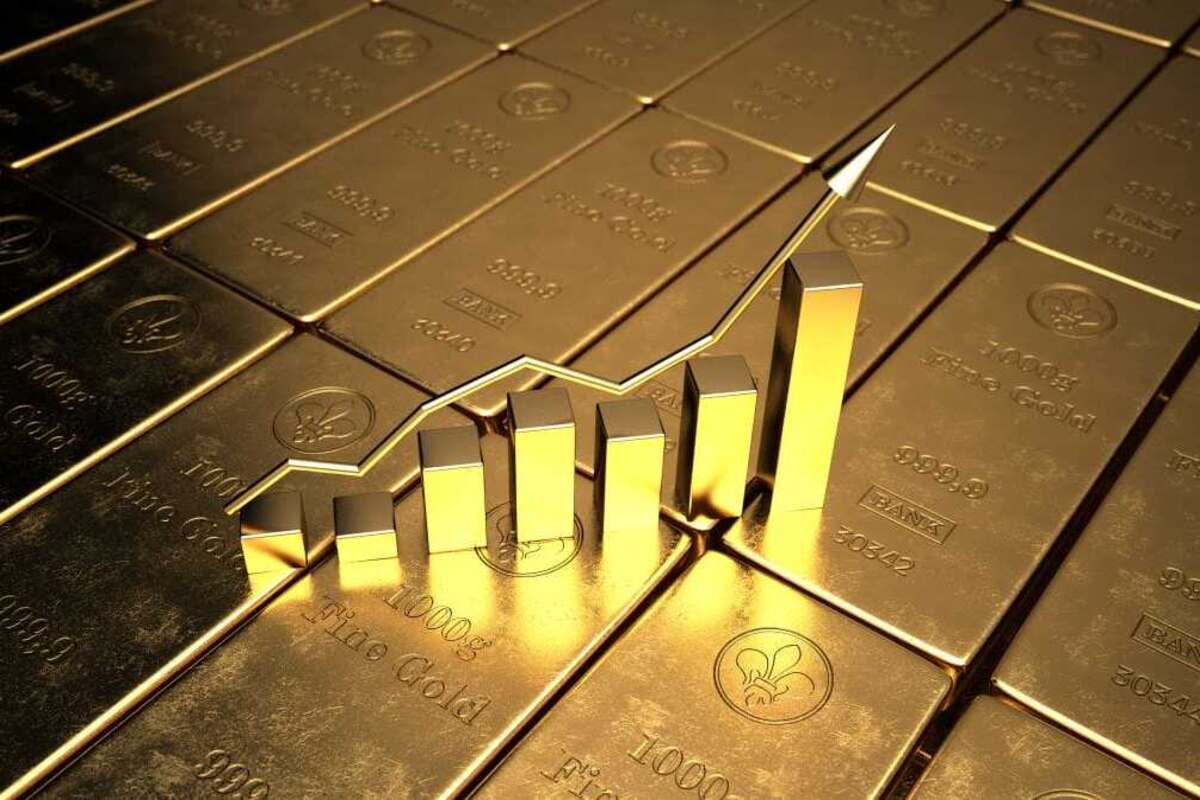Gold prices soared to a record high on Tuesday, as investors turned to the safe-haven asset following U.S. President Donald Trump’s implementation of new 25 percent tariffs on steel and aluminum imports, raising fears of inflation and an escalating trade war.
In the UAE, gold rates experienced an increase, with 24-carat gold rising by AED2.5 to reach AED349.5, and 22-carat gold climbing AED2.25 to AED325. Furthermore, 21-carat gold went up by AED2.25 to AED310.75, while 18-carat gold saw a rise of AED2, reaching AED267.25.
Spot gold surged by 0.4 percent to $2,917.80 per ounce as of 0510 GMT, after earlier hitting a record high of $2,942.70 during the session. U.S. gold futures also strengthened by 0.3 percent to $2,944.10.
Tariffs fuel fears of a trade war impacting gold prices
Trump significantly increased tariffs on steel and aluminum imports on Monday to 25 percent “without exceptions or exemptions,” aiming to support struggling industries. However, this tariff hike heightened the potential for a multi-front trade war.
The safe-haven metal achieved its eighth record high in 2025 in response to Trump’s tariffs, which have intensified global growth uncertainties, trade war worries, and inflationary pressures.
Concerns regarding the proposed import tariffs have affected U.S. gold futures, with key contracts trading at a premium to the spot price, currently around $26. These threats have sparked a new gold rush, bringing the glittering $3,000 milestone into sight.
Read more: UAE gold prices up AED2.75 as global rates near records amid Trump tariffs threats
Gold prices and inflation expectations influence investor sentiment
Tariffs could worsen U.S. inflation, with investors poised for the upcoming U.S. Consumer Price Index (CPI) and Producer Price Index (PPI) data to be released this week. Federal Reserve Chair Jerome Powell is scheduled to testify before Congress on Tuesday and Wednesday.
Spot silver decreased by 0.5 percent to $31.87 per ounce. Platinum dipped by 0.7 percent to $986.46, while palladium increased by 0.4 percent to $987.25.
Trade war concerns elevate demand for gold
Gold prices rose on Monday and hovered near record-high levels reached in the previous session.
Gold is viewed as a safe investment during economic and financial turmoil, yet higher interest rates diminish the non-yielding asset’s attractiveness. Federal Reserve officials stated on Friday that the U.S. job market is solid, highlighting the uncertainty regarding how Trump’s policies will impact economic growth and still-elevated inflation, emphasizing their cautious approach to rate cuts.
Trade war uncertainty impacts gold prices
Last week, the World Trade Organization announced that China initiated a dispute over the U.S. tariffs. China also declared tariffs on certain U.S. goods in retaliation to President Donald Trump’s 10 percent levy on Chinese imports. This marked a new trade war between the world’s top two economies, which continued to raise safe-haven demand for gold and further supported the surge in prices.
The Trump administration’s tariff plans come with inflation risks, three Federal Reserve officials warned on Monday. One official argued that uncertainty regarding price outlooks calls for slower interest rate cuts than would otherwise be necessary. With the current U.S. administration creating market uncertainty, and central bank buying showing no signs of slowing down, gold prices are very likely to exceed $3,000 this year.
Job growth slowdown and its implications for gold
U.S. job growth in January decelerated more than expected following solid increases in the preceding two months. However, a 4.0 percent unemployment rate likely provides the U.S. Federal Reserve with justification to hold off on reducing interest rates until at least June. The Labor Department’s closely watched employment report released on Friday also indicated strong wage growth last month, with average hourly earnings experiencing their largest increase in five months, helping to sustain consumer spending. The resilience of the labor market remains a key driver of economic expansion.
Gold is traditionally considered a safe investment during economic and geopolitical turmoil, yet higher interest rates reduce the appeal of the non-yielding asset. U.S. Treasury Secretary Scott Bessent stated on Thursday that the Trump administration was not particularly concerned about the Federal Reserve’s trajectory on interest rates and is focusing on lowering 10-year Treasury yields. The yield on the benchmark 10-year U.S. government bond fell to its lowest level since December 12 earlier this week amid expectations that the Fed will cut rates twice by the end of 2025, further benefiting gold prices.








